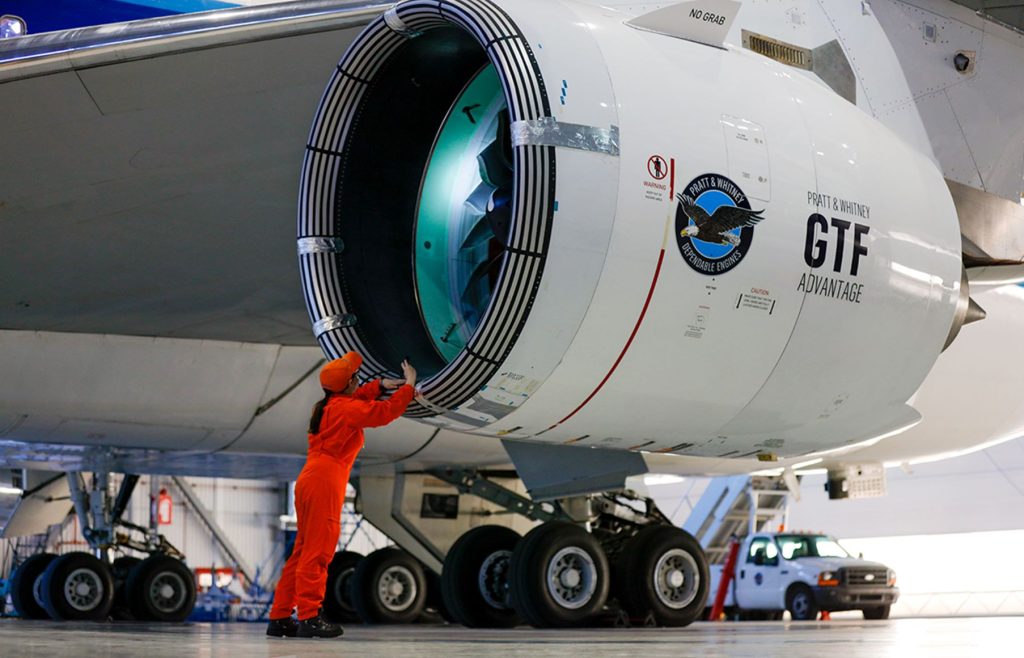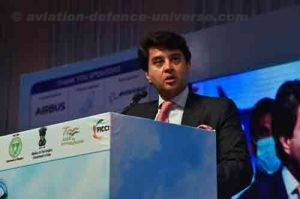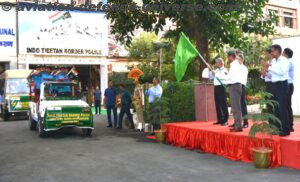
By Ashmita Sethi, President and Country Head, Pratt & Whitney (India)

New Delhi. 23 March 2022. The COVID-19 pandemic is gradually receding, and the world is opening up. As airlines in India, and globally, start operating in full bloom, we need to ensure that post-pandemic growth of the aviation industry continues to be on sustainable basis. Currently, the aviation industry is responsible for 2.4% of global CO2 emissions, but this figure is expected to rise as other sectors of the economy decarbonize. This makes it important for our industry to ensure that we are technologically enabled to lead the industry towards a more sustainable future.
Sustainable flying has been a key focus for the aerospace industry for some time now and over the years, the industry stakeholders have worked extensively to develop new technologies and operating practices to maximize energy efficiency and reduce carbon emissions. Today, there is a renewed sense of urgency in the society for a cleaner environment and this has once again brought the aviation industry together to commit their support to net zero emission by 2050. This was reflected at the COP26 summit in Glasgow, UK, when over 20 nations signed the International Aviation Climate Ambition Coalition (IACAC) declaration, committing to the goal of net zero aviation CO2 emissions by 2050, supported by the advancement of innovative technologies, and the expansion of Sustainable Aviation Fuels (SAF) production.
Among the multiple solutions our industry is pursuing to address this challenge, two of the most important avenues are the push for more efficient aircraft engines and increased adoption of SAF. These two are being identified as crucial solutions as the adoption of efficient engines and the SAFs do not require major modifications to aircraft and can be applied to the aircraft flying today. While Hydrogen-fueled and electrically powered aircraft are also exiting technologies being developed, they would still require some time to mature and be ready for a full-scale use. As a result, efficient engines and SAFs are our best and most secure bet for decarbonizing aviation in the near future.
SAFs and efficient engine technology: our safest bet for today’s sustainable flight
Our most recent generation of commercial jet engines are enabling passenger aircraft to deliver 16-20 percent better fuel efficiency than their predecessors, effectively saving millions of tonnes of CO2 in savings over their lifetimes. A great example of this our revolutionary GTF (Geared Turbofan) engine family, which enabled a 16%-20% improvement in fuel efficiency and carbon emissions compared to the previous generation, while also reducing NOx emissions by 50%, and noise footprint by 75%.
In India, GTF engines power more than 190 A320neo family aircraft for GoFIRST and IndiGo and have saved more than 150 million gallons (580 million liters) of fuel, avoided over 1.4 million tonnes of carbon emissions, and gained more than 2.8 million hours of experience. In fact, with the recent launch of our GTF Advantage, we have now successfully enhanced our GTF technology to its optimum level, by further reducing fuel consumption by an additional 1 percent.
SAFs are manufactured from sustainable, non-fossil-based feedstocks, such as agricultural byproducts, used cooking oil or solid municipal waste, and can therefore reduce lifecycle emissions by up to 80% compared to standard jet fuel. The key advantage with SAFs is that they can be used in existing aircraft systems, without requiring any modifications to aircraft or fueling infrastructure. Currently, SAFs are certified for use in jet engines at up to a 50 percent blend with kerosene, but with further development, we aim to have jet engines ready to accept SAFs at a full 100 percent.
The challenge we face is that current SAF production is only able to serve a minute fraction of global jet fuel demand, with today’s supply accounting for less than 0.1% of the global fuel mix. Furthermore, SAFs are around two to five times more expensive than conventional jet fuel today. Therefore, there is a need for more investments by the Government and more efforts from industry bodies to expand production infrastructure and make SAFs a competitive solution for airlines in the near and medium-term. The drive towards SAF goes hand in hand with our efforts to increase fuel efficiency with advanced propulsion technologies, from geared turbofan architectures to hybrid-electric systems.
Is India’s aviation industry ready for a more sustainable air travel?
In last few years, India’s aviation industry has taken timely steps to maximize fuel efficiency and reduce carbon emissions with the induction of hundreds of efficient aircraft into its fleet. With the Government and the industry stakeholders collaboratively working to develop new regional routes under UDAN, Indian airline operators will require more efficient aircraft to drive more sustainable and affordable air travel. In fact, regional aviation in India can be even more successful once regional operators are technologically capable to drive affordable flights alongside it being green and sustainable. This is where efficient propulsion systems and increased adoption of SAFs will help the operators.
Being one of the first adopters of GTF technology back in 2016, India’s aviation industry has already begun its transition into a more environmentally and sustainably driven industry. Today, we are witnessing a collective effort from different sections of India’s aviation industry, where each section is employing innovative ways to mitigate emissions. For instance, Indian airports have deployed TaxiBot services to tow an aircraft from the terminal gate to the take off point and return it to the gate after landing. This is effectively saving millions of liters of fuel and avoiding tonnes of carbon emission.
Additionally, major Indian airlines and industry stakeholders have also committed to explore potential of using SAFs in aircraft and to increase its supply in the market. Recently, a leading Indian airline has also taken the delivery of its first aircraft operating on SAF. This sets a positive example and further creates a great opportunity to drive policy towards accelerating SAF uptake in the short term.
These practices reflect that India is on the right track and is taking timely actions to meet its green target. Today, there is a growing realization of the importance of efficient aircrafts and SAFs and this is a great opportunity for us to create a roadmap for emerging technologies like hybrid-electric and Hydrogen-fueled aircraft for our long-term sustainable mission. With continued efforts, as India is taking today, we are optimistic that India’s aviation industry will not only create an environmentally sustainable future but will also ensure a financially resilient and competitive aviation industry as a whole.

































































































































